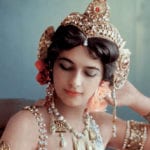 History
History  History
History  Technology
Technology Top 10 Everyday Tech Buzzwords That Hide a Darker Past
 Humans
Humans 10 Everyday Human Behaviors That Are Actually Survival Instincts
 Animals
Animals 10 Animals That Humiliated and Harmed Historical Leaders
 History
History 10 Most Influential Protests in Modern History
 Creepy
Creepy 10 More Representations of Death from Myth, Legend, and Folktale
 Technology
Technology 10 Scientific Breakthroughs of 2025 That’ll Change Everything
 Our World
Our World 10 Ways Icelandic Culture Makes Other Countries Look Boring
 Misconceptions
Misconceptions 10 Common Misconceptions About the Victorian Era
 Mysteries
Mysteries 10 Strange Unexplained Mysteries of 2025
 History
History 10 Things You Didn’t Know About the American National Anthem
 Technology
Technology Top 10 Everyday Tech Buzzwords That Hide a Darker Past
 Humans
Humans 10 Everyday Human Behaviors That Are Actually Survival Instincts
Who's Behind Listverse?

Jamie Frater
Head Editor
Jamie founded Listverse due to an insatiable desire to share fascinating, obscure, and bizarre facts. He has been a guest speaker on numerous national radio and television stations and is a five time published author.
More About Us Animals
Animals 10 Animals That Humiliated and Harmed Historical Leaders
 History
History 10 Most Influential Protests in Modern History
 Creepy
Creepy 10 More Representations of Death from Myth, Legend, and Folktale
 Technology
Technology 10 Scientific Breakthroughs of 2025 That’ll Change Everything
 Our World
Our World 10 Ways Icelandic Culture Makes Other Countries Look Boring
 Misconceptions
Misconceptions 10 Common Misconceptions About the Victorian Era
 Mysteries
Mysteries 10 Strange Unexplained Mysteries of 2025
10 Secretly Talented US Presidents
We all know President Obama can sing Motown, and he’s no slouch when it comes to writing, either. But he isn’t the first, or most, creative US president. Other chief executives also had great talent, and we don’t just mean playing golf or lying to Congress.
10Franklin Delano Roosevelt
FDR is the only president to receive a writing credit on a motion picture, 1936’s The President’s Mystery. In the film, Henry Wilcoxon (who played Marc Antony in Cecil B. DeMille’s famously eccentric Cleopatra) stars as Jim Blake, a millionaire who disappears with all of his money and starts a new life.
A longtime fan of paperback mysteries, FDR first posited the idea to his friend, Liberty Magazine editor Fulton Oursler, as follows: How could a man disappear with $5 million and not be traced? Such a man, FDR imagined, hated “the falsity of his existence, the meaninglessness of his career, the sameness of his middle-aged routine, the absence of purpose, and the boredom with his marriage.” Roosevelt had no solution to the problem that was clearly weighing on his mind for reasons we won’t speculate on. He suggested that Oursler invite a group of distinguished writers to collaborate on a solution.
Six writers contributed to the story, which Liberty published in serialized form in 1935. The conclusion, however, was left open, and the magazine offered a prize to the reader who submitted the best solution. A year later, the story—sans solution—was published as a book. Jim Blake’s fate remained unresolved until 1967, when Erle Stanley Gardner, the creator of Perry Mason, wrote a final chapter. The book was then reprinted under the title The President’s Mystery Plot.
While FDR never created another story, his son, Elliott Roosevelt, wrote a number of mystery books as well as a tell-all trilogy about life in the Roosevelt White House and family home in Hyde Park, New York. Sure enough, the books revealed a man who hated “the falsity of his existence, the meaninglessness of his career,” etc.
9Richard Nixon
Television had always been a mixed blessing for Nixon. In his infamous 1960 presidential debate with John Kennedy, Nixon appeared sweaty and pale due to a recent illness while his opponent maintained a suave demeanor, a factor often cited as part of the reason for Nixon’s loss of the election. Two years later, Nixon lost another election, this time for California governor. In his concession speech, Nixon famously declared “You won’t have Nixon to kick around anymore.”
For better or worse, however, Nixon persevered. By March 1963, when he appeared on The Tonight Show Starring Jack Paar, he had learned to show his humorous side as well as his musical talent. Although he had never learned to read music, Nixon could play saxophone, clarinet, accordion, violin, and piano, and he even wrote his own compositions. On the broadcast, as seen in the video above, Nixon was both funny and relaxed as he played his own “Piano Concerto No. 1.” On the set of The Tonight Show, Nixon met comedy writer Paul Keyes, who persuaded him to do a cameo on the 1968 premiere of Laugh-In, where he famously deadpanned “Sock it to me?” The appearance was a hit, and Nixon later credited it with helping him secure the 1968 presidential election.
Nixon continued to display his musical talents in the White House, playing “Happy Birthday” for Duke Ellington and accompanying Pearl Baily in a performance in the East Room. During the Grand Ole Opry’s inaugural broadcast in 1974, country singer Roy Acuff humorously tried to teach Nixon to use a yo-yo, after which the president performed “God Bless America,” “Happy Birthday,” and “My Wild Irish Rose.” A few months later, however, the Watergate scandal broke, and the country finally accepted Nixon’s invitation to sock it to him. Nixon resigned as president on August 8, 1974.
8Warren Harding
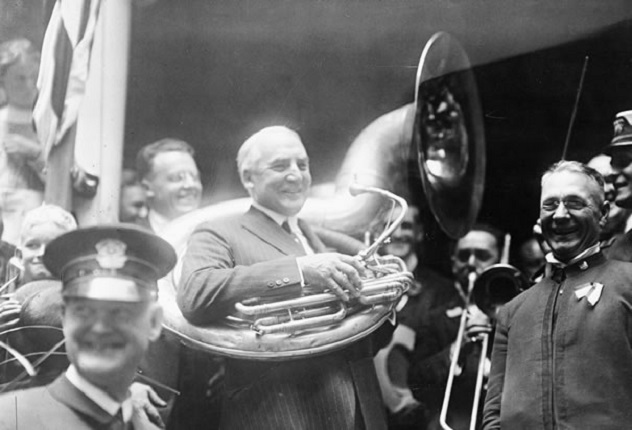
Many historians regard Harding as the worst president in US history. His administration was rocked by scandals, including Teapot Dome, in which US petroleum reserves were leased to a private oil company without competitive bidding. There is another side to Harding, however, that is seldom mentioned. Harding has been hailed as the United States’ most musical president, as he could play almost every musical instrument. His specialty was the sousaphone, a type of tuba that wraps around the body to make it easier to carry in marching bands.
Harding played in his high school band, but his musical ventures didn’t end where his political career began. While he was a senator, he played in a group called the Caledonia Silver Cornet Band. He even joined in on sousaphone with the band that played at the celebration of his presidential nomination.
7Dwight Eisenhower
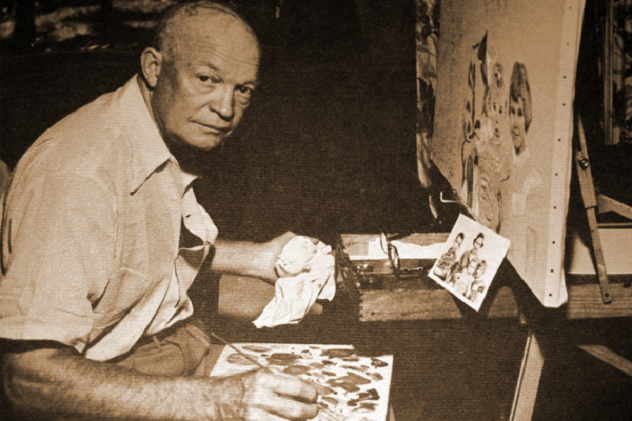
Dwight Eisenhower was a five-star general, one of only five in US history. He was Supreme Commander of the Allied Forces in World War II. What’s less known is that he was also a talented, if somewhat pedestrian, artist.
Eisenhower didn’t start painting until age 58, after he watched Thomas E. Stephens paint a portrait of his wife, Mamie. He began by copying images from magazines and photographs, eventually branching out into landscapes and portraits. Eisenhower completed a total of over 300 works, mostly during the last 20 years of his life. He never considered himself a great painter, referring to his works as mere “daubs.” Painting served mostly as a form of relaxation for the president.
Regardless of what the man himself thought of his work, Eisenhower’s old-fashioned subjects do hold a certain charm. They include his family farm in Gettysburg, an old brown barn covered in snow, and his seven-year-old grandson swinging a golf club. Eisenhower also painted five traditional portraits, including a self-portrait and one of Abraham Lincoln, which he executed during his first year in the White House in 1953. Despite his prodigious output, Eisenhower forbade that his works be bought or sold. He preferred to give them as gifts to family members and personal friends.
6Harry Truman
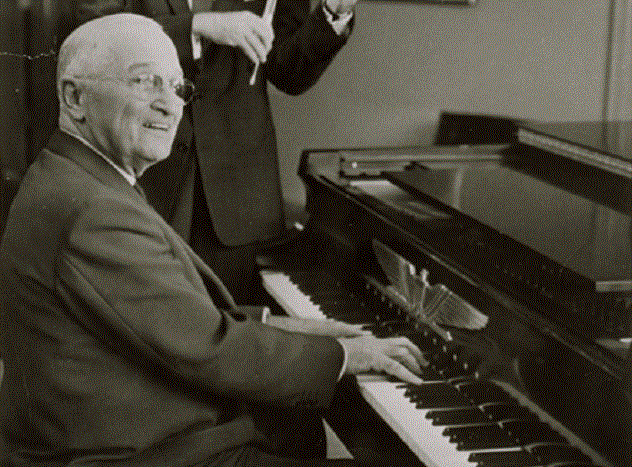
President Truman was a pianist of admittedly questionable talent. After observing one of his performances, actress Lauren Bacall later confided that then–Vice President Truman played “badly, playing the ‘Missouri Waltz,’ or something.” Anyone could be forgiven for performing less than flawlessly with the famously leggy actress perched atop their piano, but Truman apparently shared Bacall’s assessment of his talent. As a boy, he had awakened every morning at 5:00 AM to practice for two hours before going to school and had once dreamed of being a concert pianist, yet he reportedly later said “I missed being a musician, and the real and only reason I missed being one is because I wasn’t good enough.”
In the PBS program American Experience: Truman, violinist Stuart Canin recalled Truman playing for him and pianist Eugene List during the Potsdam Conference in 1945. “He didn’t always have the technique to do what he wanted,” Canin said, “but you could sense that he really loved music.” Truman was more critical of his own abilities, joking later that year at a Missouri county fair performance “When I played this, Stalin signed the Potsdam Agreement.”
5Bill Clinton
Bill Clinton famously exhibited his saxophone skills in 1992 with his rendition of “Heartbreak Hotel” on The Arsenio Hall Show, as seen in the video above. But that’s not Clinton’s only secret talent—he’s also a master of crossword puzzles. He can reportedly finish the New York Times crossword in just a few minutes, which he always uses ink to complete, and with so little effort that he can do so while carrying on a serious political conversation. In his appearance in the 2006 documentary Wordplay, Clinton explained how solving a crossword puzzle is similar to tackling any complex problem, saying “You start with what you know the answer to and you just build on it.”
In 2007, he even got the chance to write clues for a New York Times crossword puzzle, which was called “Twistin’ the Oldies.” The puzzle, in which the answers consisted of rock song titles updated for the Baby Boomer generation, came with a warning from editor Will Shortz that the clues “are a little more playful and involve more wordplay than in a typical crossword.” While some of the answers—such as “You’re So Veiny” as the answer to “Boomer update to a Carly Simon song”—seem more cringe-inducing than clever, the puzzle is impressive.
4Abraham Lincoln
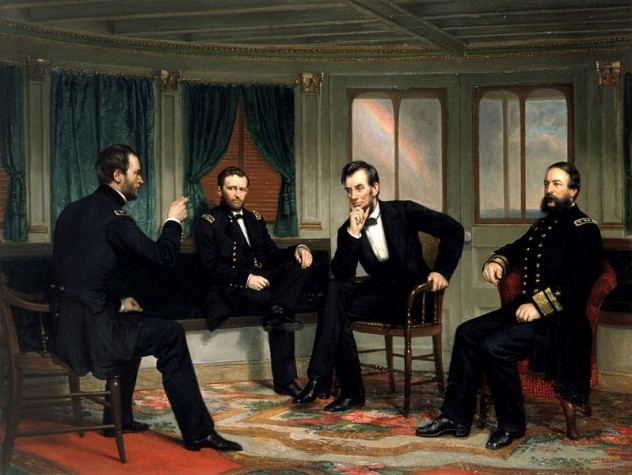
Lincoln had always loved science and cutting-edge technology. In the late 1850s, he taught himself the highly mathematical art of surveying as well as Euclidean geometry and law. In 1848, when Lincoln was a Congressman, he was traveling back to Illinois when his flatboat became stranded on a sandbar. The crew placed empty casks under the boat until it was lifted high enough to clear the sand bar, which gave Lincoln an idea.
With the help of Walter Davis, a Springfield mechanic, Lincoln created a scale model of a device for “Buoying Vessels Over Shoals.” When he returned to Washington, he applied for a patent, which was issued on May 22, 1849. Lincoln’s invention was never manufactured, and it’s not clear whether the full-sized version would have worked, but he remains the only US president to have held a patent. The scale model of his invention is on display at the Smithsonian Institution in Washington, D.C.
3Jimmy Carter
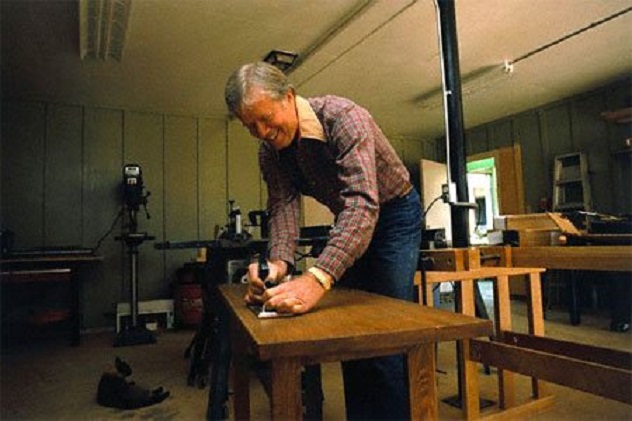
Jimmy Carter is well known for his humanitarian work, for which he won the 2002 Nobel Peace Prize. What you might not know is that he is also a published novelist and poet as well as a respected artist and furniture maker.
Carter began writing poetry while he was in the submarine force from 1948–1952. In 1995, he published a book of poetry called Always a Reckoning and Other Poems, making him the first US president to do so. Unfortunately, the critical response was underwhelming. The New York Times called Carter a “mediocre poet” who wrote “well-meaning, dutifully wrought poems that plod from Point A to Point B.” Eight years later, Carter also became the first president to publish a work of fiction, a novel set in the Deep South during the Revolutionary War called The Hornet’s Nest. He displayed more of his talents when he couldn’t find a cover for the book that he liked and decided to paint one himself.
Carter’s paintings and furniture are auctioned off from time to time by his nonprofit organization, the Carter Center, along with items such as luxury vacations and presidential and celebrity memorabilia. In 2012, one of Carter’s paintings sold for $250,000, while last year, a stool handmade by the former president fetched $300,000. Profits from the sale of Carter’s works benefit the center’s initiatives to advance worldwide peace and health.
2Ronald Reagan
Before entering politics, Reagan was an actor with more than 50 film credits to his name. His most famous film is the 1940 biopic Knute Rockne, All American, in which Reagan played Notre Dame football star George Gipp.
Reagan started his career in radio, making $10 per game plus transportation expenses as a sportscaster for WOC in Davenport, Iowa. He graduated to radio commercials, eventually becoming a staff announcer for the station. Within two years, he was transferred to WHO, an NBC affiliate in Des Moines, Iowa. By 1936, he was recreating Chicago Cubs baseball games and doing sportscasts of Big Ten football.
In the late ‘30s, Reagan turned to acting. Over the next 15 years or so, he appeared in dozens of films and television shows, but by 1954, the roles had dried up. Reagan took what work he could get, including two weeks as an emcee and performer in a Las Vegas song and dance revue. The Reagans didn’t care for the Vegas scene, however, so the actor signed on with General Electric Theater, a Sunday evening television show which Reagan hosted for the next eight years.
As part of his duties on GET, Reagan spent 10 weeks every year visiting General Electric’s research and manufacturing facilities as a “roving ambassador.” By his own account, Reagan had visited 139 GE facilities by 1952, speaking with over 250,000 employees in the process. This surely played no small role in his emergence as the Great Communicator.
1Thomas Jefferson
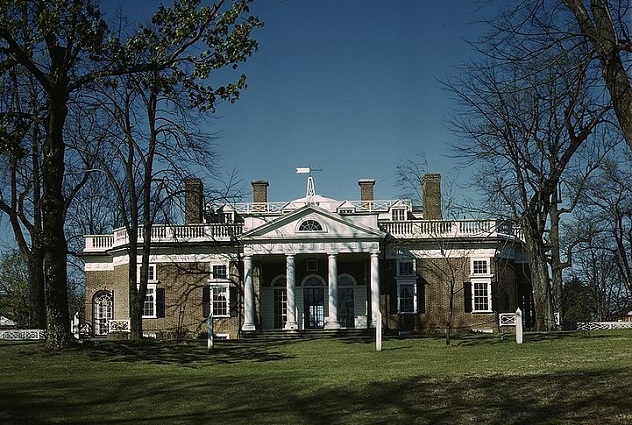
The author of the Declaration of Independence was also an innovative architect and inventor as well an accomplished musician. As an architect, he is best known for his plans for the University of Virginia, including the university’s famed Rotunda, which Jefferson modeled after the Roman Pantheon. Jefferson also designed his plantation (Monticello), his villa retreat (Poplar Forest), and several other Virginia homes.
In addition to planning cities and landscapes, he improved household items he had seen in Europe. His innovations included a portable copying press, a pasta machine, a plow, and a mechanical dumbwaiter. He designed furniture as well, including a revolving chair with a leg rest and writing arm and a revolving book stand with adjustable book rests that folded up for easy storage.
One of Jefferson’s most celebrated inventions, the “Great Clock,” still adorns the entrance hall at Monticello. Gravity powers its 8-kilogram (18 lb) weights, which are strung on ropes and hang through holes in the floor to the cellar below. Markings on the wall tell onlookers the time and day of the week. In Jefferson’s day, the clock was connected to a large copper gong on the roof, which could be heard throughout the plantation. To facilitate the clock’s repairs, Jefferson invented a folding ladder, which could also be used for pruning trees. It was the first of its kind in the United States and later became widely used in libraries.
Jefferson played the violin, which he is said to have practiced three hours a day. He was proficient enough to receive regular invitations from Virginia colony Governor Francis Fauquier to play chamber music in “the Palace.” During his presidency, Jefferson championed the music of the Native Americans, using it to counter European claims about the inherent degeneracy of the New World.
One stain on Jefferson’s record—and there are many—is his attitude toward the music of African Americans, which he mentions just twice in all of his numerous writings. Jefferson preferred the music of European composers—especially his favorite, Corelli—but he does appear to have at least kept an open mind regarding the music of his slaves. He admits that “they are more generally gifted than the whites, with accurate ears for tune and time,” but goes on to say “Whether they will be equal to the composition of a more extensive run of melody, or of complicated harmony, is yet to be proved.”
+Chester A. Arthur
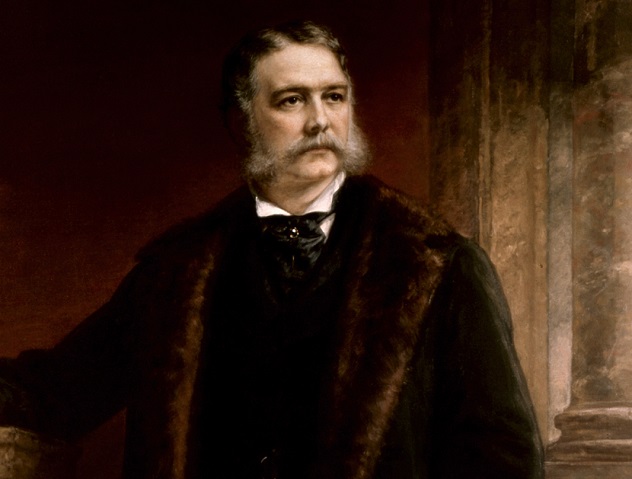
“Elegant Arthur,” who was also called the “Gentleman Boss,” reportedly owned 80 suits, custom made for him by a New York tailor. His wardrobe boasted colorful vests, ruffled shirts, fancy shoes, a “forest” of canes, and an array of coats and hats. Arthur’s fashion sensibilities weren’t limited to his dress—he hired Louis Comfort Tiffany to remodel and update the dilapidated White House. The old furniture was sold and replaced with the latest designs, while modern conveniences—such as elevators and indoor plumbing—were installed. The renovations cost $30,000, approximately $2 million in today’s money.
Arthur entertained the elite of the day at the new White House with concerts and 12-course meals. When he wasn’t attending a state dinner, he enjoyed two-hour meals in his private apartments. After dinner, he went out to the theater, an exclusive social club, or to a friend’s house for late-night drinks and cigars. He rode to these engagements in an ornate green carriage pulled by two matching horses in silver harnesses and green blankets ornamented with his monogram. The following morning, when he rolled out of bed just after 10:00 AM, his personal valet helped him with his wardrobe.
Despite his dapper appearance, Arthur was a very sick man. He suffered from Bright’s disease, a fatal affliction of the kidneys. Elegant Arthur died at age 57 the year after he left the White House.
Jackie Fuchs is a writer and attorney with a BA in linguistics from UCLA and a JD from Harvard. She played bass as Jackie Fox for ‘70s all-girl rock band The Runaways with Joan Jett and Lita Ford.
Jackie is a former journalist and Huffington Post blogger with an interest in word origins and medieval history. Her blog, Nothing Too Trivial (Interesting Things for Interested People), can be found here.


